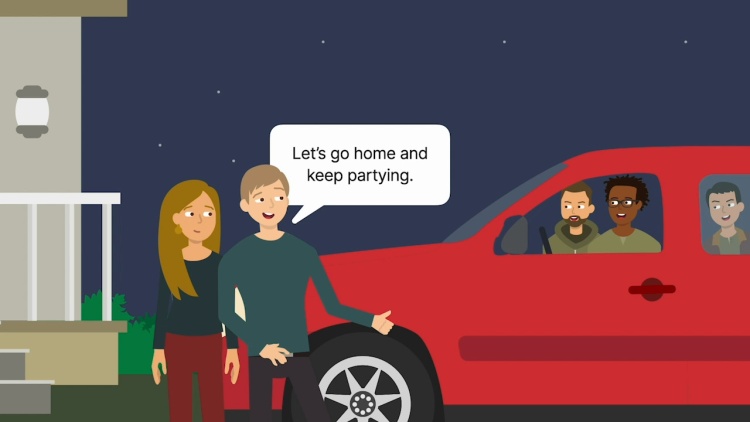State v. Kinney
Vermont Supreme Court
171 Vt. 239, 762 A.2d 833 (2000)
- Written by Peggy Chen, JD
Facts
Steven Kinney (defendant) was charged with kidnapping, sexual assault and lewd and lascivious behavior stemming from events on the night of October 9, 1998. Kinney was drinking and doing drugs with friends. Kinney and several friends then went to the house of Luca Sweetser, hoping to buy cocaine. Kinney went into the house and emerged carrying the victim over his shoulder. Kinney contended that he found Sweetser and the victim in bed, the victim woke up, began talking to him and agreed to go help him buy drugs. Kinney claimed the victim giggled and went willingly. The victim testified that she did not go willingly, that Kinney pulled her out of bed and threw her over his shoulder. The victim claimed that she repeatedly stated that she did not want to go and asked to be let out of the car. The group went back to the house where they had been drinking and everyone, including the victim, drank and smoked pot. The victim testified that she did so because she did not want Kinney and his friends to think she was scared. Kinney and the victim then went to Kinney’s house where they had sex. Kinney claimed it was consensual; the victim said Kinney raped her. The victim went to sleep and in the morning, Kinney arranged for a friend to take her home. The prosecution called Dr. Jan Tyler to testify about rape trauma syndrome. Kinney objected and was overruled. Tyler testified that rape trauma syndrome is a set of behaviors common to rape victims. Tyler also testified that victims of rape are more likely to make verbal protests than by struggling or screaming and that it is not unusual for a victim to fall asleep immediately after the assault due to denial and withdrawal. Tyler further testified that the false reporting rate by rape victims is quite low, about two percent. Kinney was convicted and appealed.
Rule of Law
Issue
Holding and Reasoning (Dooley, J.)
What to do next…
Here's why 899,000 law students have relied on our case briefs:
- Written by law professors and practitioners, not other law students. 47,000 briefs, keyed to 994 casebooks. Top-notch customer support.
- The right amount of information, includes the facts, issues, rule of law, holding and reasoning, and any concurrences and dissents.
- Access in your classes, works on your mobile and tablet. Massive library of related video lessons and high quality multiple-choice questions.
- Easy to use, uniform format for every case brief. Written in plain English, not in legalese. Our briefs summarize and simplify; they don’t just repeat the court’s language.





